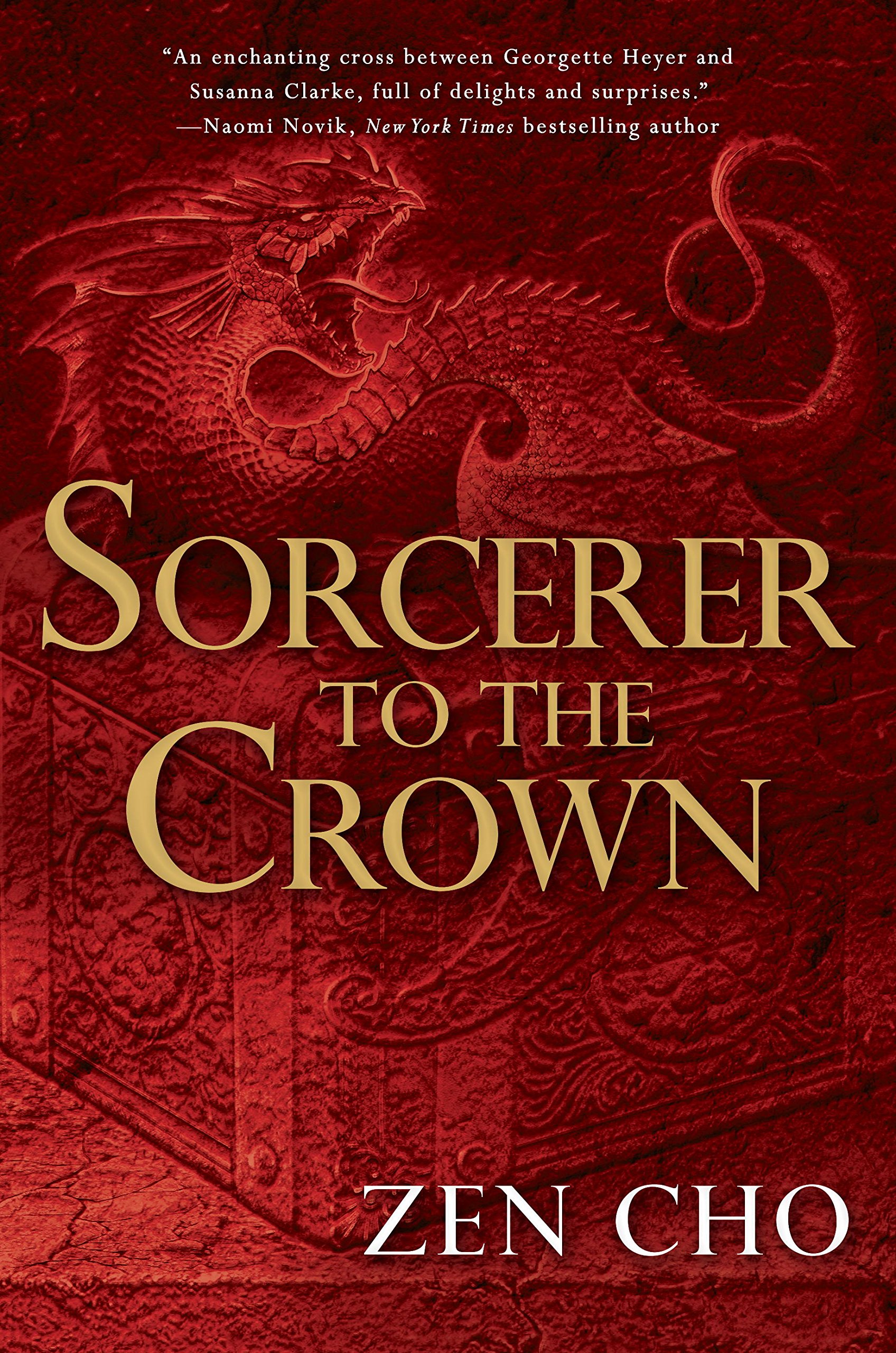This debut fantasy is the most sink-in-and-enjoy book I've read in quite awhile--the kind of book that makes me stop periodically and think, "Why do I bother reading anything that I like less than this? I could be reading this!"
It is also one of those books where I, to be totally honest, just want to rip off the dust jacket and write READ THIS BOOK across the cover instead. The cover is not good. The cover is a red splodge with a vaguely decipherable dragon across the top. The book, on the other hand, is a spectacularly handled regency diversion, a funny, spirited mix of disarmingly likeable characters, court politics, personal feuds, grumpy fairies, surprise dragons, and thoroughly considered, culturally diverse magical practice.
You might be reminded of Jonathan Strange and Mr. Norell from the premise on its own: England is losing its magic, and everyone wants to know why. Sorcerer to the Crown's protagonists are its superpower, though. Atypically for its genre, none of the three main characters is white. More typical are the harangued young gentleman and the strong-minded young woman who leads him on a chase, but this familiarity is paired with originality; generally speaking, regency heroines aren't nonchalantly traipsing through London with the majority of England's magical power tucked in their reticules.
(The third major player, by the way, is a Malaysian witch named Mak Genggang, who is so delightful that I will just leave her for you to discover on your own.)
It's a thoroughly fun book, and I'm already excited about the sequel--check it out in our scifi/fantasy section!
What To Read Next
The Grand Sophy by Georgette Heyer is my favorite book by the absolute queen of regency romance. There are no bodice-rippers here--she's all family friendly, the long eighteenth century by way of the 1930s. This book features a haughty man of morals finding himself aghast at the cheerfully wild behaviors of a heroine who will remind you very much of Cho's Prunella.
Master and Commander by Patrick O'Brian is the starting point of this quintessential Napoleonic sea epic. Between battles against man and tide, you will learn so much about boats. Just, absolute loads about boats. You will not mind this, and the characters are wonderful.
The Hundred Thousand Kingdoms by N.K. Jemisin is a fantasy novel which drags a distant child of the emperor into the treacherous capital. There, barely restrained gods live, either the potential ruler's best hope for salvation, or an even greater danger to her than her vicious family.
Evelina by Frances Burney is where Jane Austen got her stuff. If you like Gossip Girl and Pride and Prejudice, it's time to back up to the 1770s, where hair is tall, gambling is rampant, and there's nothing worse you can be than a nice girl in London.
The Goblin Emperor by Katherine Addison is not set in our world, but it borrows a little steampunk and drags it back to the seventeeth/eighteenth centuries. Much like Sorcerer's Zacharias Wythe, newly enthroned Maia is racially an outcast, insecure as the new emperor. It's not an action book. Instead, intrigue, threats, and all, it moves slowly and gently through Maia's growth in a role he never expected.
His Majesty's Dragon by Naomi Novik is the natural fantasy counterpart to Patrick O'Brian's Aubrey and Maturin novels, featuring sentient dragons piloted by humans into the Napoleonic wars by brave men (and the occasional woman). Book-loving dragon Temeraire by far outshines everything else in the series, but the action is great and the human hero is noble--which I assume is something you like a little, if you like this genre at all.
Jonathan Strange and Mr. Norrell by Susanna Clarke is a period fantasy that features Dickensian characters, heaps of intricate description, and a particularly good scene with the gargoyles of Yorkminster coming to life.
Newt's Emerald by Garth Nix is an upcoming (2016) young adult novel by the author of the Abhorsen series, mixing regency romance, magic, and mystery.
The Strangler Vine by M.J. Carter is a Sherlock Holmes-style mystery featuring a whiningly naive member of the East India Company paired with a jaded ex-member of same, trekking across India in search of a missing author and finding death and corruption along their trail. Complex, textured, and very aware of exactly what kind of role the British had in colonized India, it's a quick-paced, highly readable, fun adventure, absolutely packed with historical goodies.


